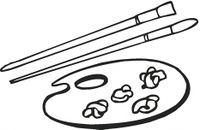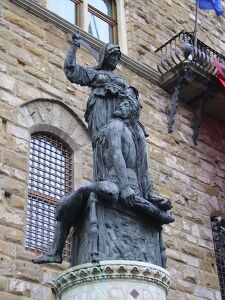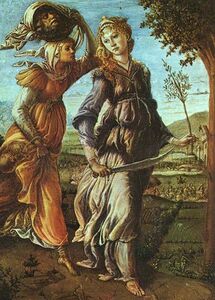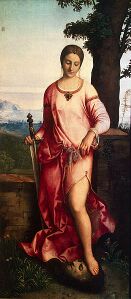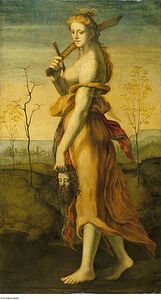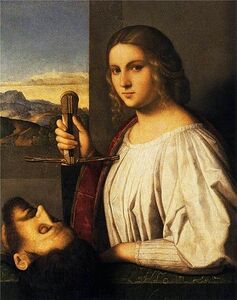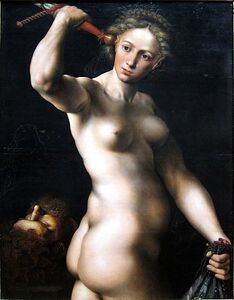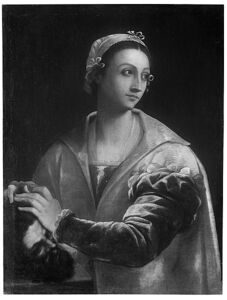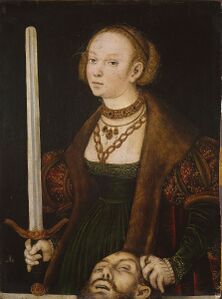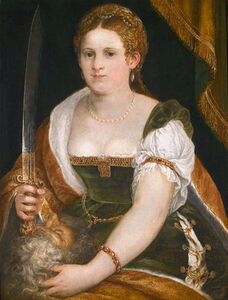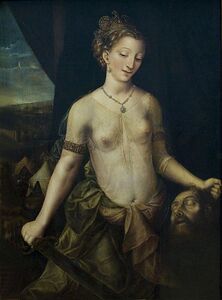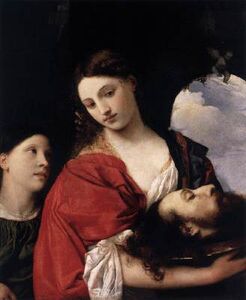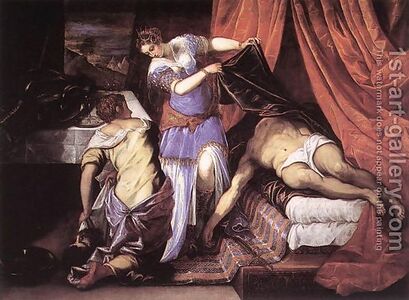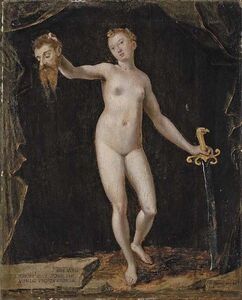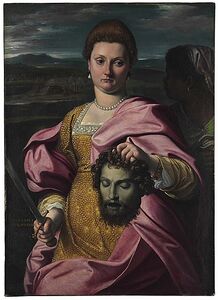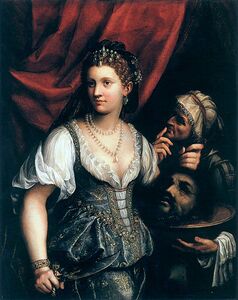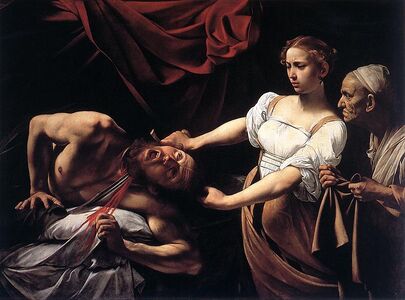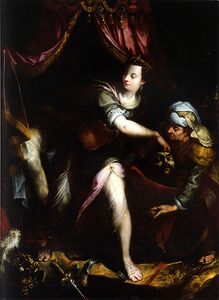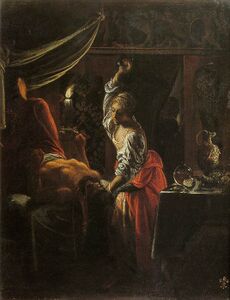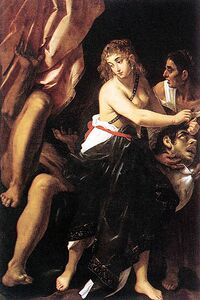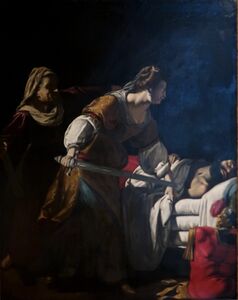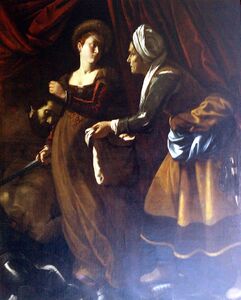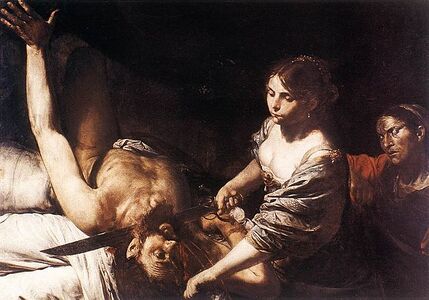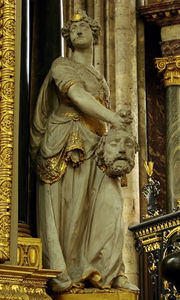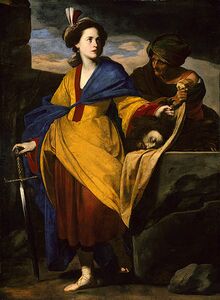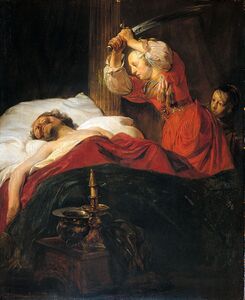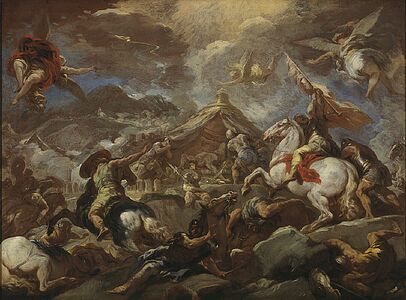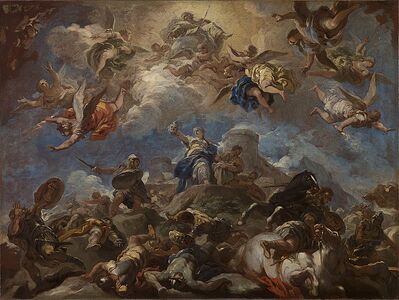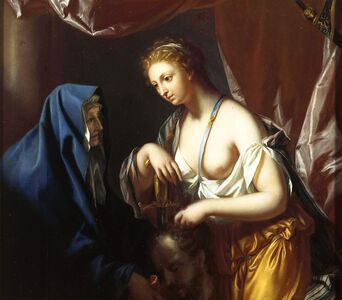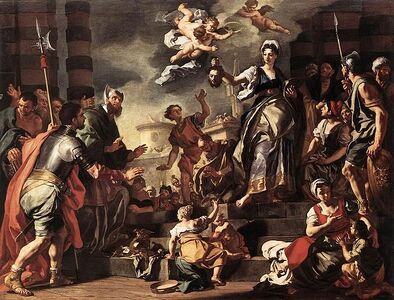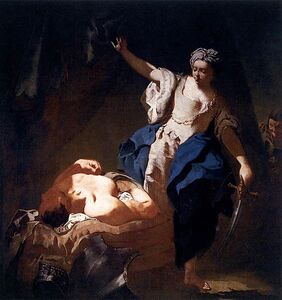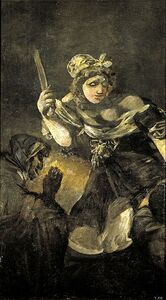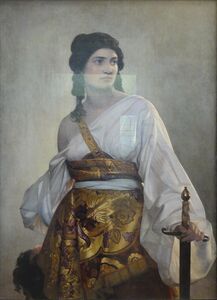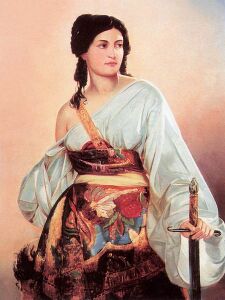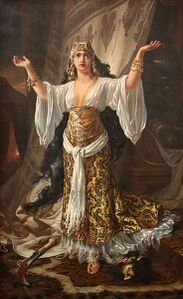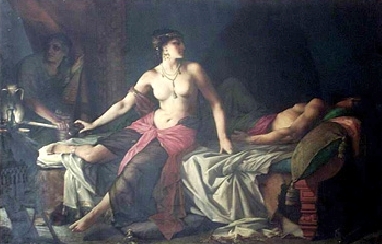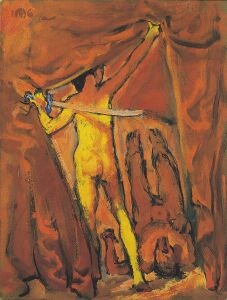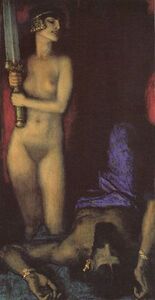Difference between revisions of "Category:Judith--art (subject)"
| Line 31: | Line 31: | ||
File:Judith Hemessen.jpg|[[Judith (1540 Hemessen), art]] | File:Judith Hemessen.jpg|[[Judith (1540 Hemessen), art]] | ||
File:Judith Piombo.jpg|[[Judith (1540 Piombo), art]] | File:Judith Piombo.jpg|[[Judith (1540 Piombo), art]] | ||
File:Judith Cranach.jpg|[[Judith (1550 Cranach), art]] | File:Judith Cranach Workshop.jpg|[[Judith (1550 Cranach), art]] | ||
File:Judith Sustris.jpg|[[Judith (1550 Sustris), art]] | File:Judith Sustris.jpg|[[Judith (1550 Sustris), art]] | ||
File:Judith Vasari.jpg|[[Judith Beheading Holofernes (1554 Vasari), art]] | File:Judith Vasari.jpg|[[Judith Beheading Holofernes (1554 Vasari), art]] | ||
Revision as of 12:57, 17 February 2021
Works of art related to Judith
Overview
Early Renaissance images of Judith tend to depict her as fully dressed and desexualized, but gradually, in later Renaissance artists the desexualized image of Virtue leave room to a more sexual and aggressive woman, a "seducer-assassin". This transition is already apparent in the paintings of Giorgione and Lucas Cranach the Elder.
In the Baroque period, images of Judith began to take on a more violent character, in the works of Caravaggio, Artemisia Gentileschi, and others, who chose to show the actual moment of the killing.
Modern paintings of the scene insist on the erotic aspects of the narrative, depicting Judith as an "oriental" beauty, often expressed in the nude (Gustav Klimt, Franz von Stuck). The image of Judith merged with that of Salome, whose enormous success soon overshadowed every rival character.
Judith, in the art
- Judith Gentileschi.jpg
- Judith Gentileschi.jpg
- Judith Gentileschi.jpg
- Judith Varma.jpg
- Judith Klimt.jpg
- Judith Chicago.jpg
- Judith Blondell.jpg
Additional works
- Judith (1873 Varma), art by Raja Ravi Varma (M / India, 1848-1906)
Pages in category "Judith--art (subject)"
The following 60 pages are in this category, out of 60 total.
1
- Judith and Holofernes (1460 Donatello), art
- Judith and Holophernes (1472 Botticelli), art
- Judith and Holophernes (1495 Mantegna), art
- Judith (1504 Giorgione), art
- Judith and Holofernes (1509 Michelangelo), art
- Judith (1510 Beccafumi), art
- Judith (1525 Catena), art
- Judith (1525 Palmezzano), art
- Judith (1525 Vermeyen), art
- Judith (1530 Cranach), art
- Judith (1540 Hemessen), art
- Judith (1540 Piombo), art
- Judith (1550 Cranach), art
- Judith (1550 Sustris), art
- Judith Beheading Holofernes (1554 Vasari), art
- Judith (1570 Matsijs), art
- Judith (1570 Titian), art
- Judith Beheading Holofernes (1578 Tintoretto), art
- Judith and the Head of Holofernes (1580 Veronese), art
- Judith (1585 Ramey), art
- Judith (1595 Carracci), art
- Judith with the Head of Holofernes (1596 Galizia), art
- Judith Beheading Holofernes (1599 Caravaggio), art
- Judith with the Head of Holofernes (1600 Fontana), art
- Judith Beheading Holofernes (1603 Elsheimer), art
- Judith Beheading Holofernes (1608 Baglione), art
- Judith (1610 Cesari), art
- Judith with the Head of Holofernes (1613 Allori), art
- Judith and Her Maidservant (1614 Gentileschi), art
- Judith Beheading Holofernes (1615-20 Gentileschi), art
- Judith (1615 Saraceni), art
- Judith (1616 Rubens), art
- Judith Beheading Holofernes (1620 Guerrieri), art
- Judith Beheading Holofernes (1622 Liss), art
- Judith and Her Maidservant with the Head of Holofernes (1625 Gentileschi), art
- Judith Beheading Holofernes (1625 Grammatica), art
- Judith Beheading Holofernes (1626 Valentin), art
- Judith (1627 Blasset), art
- Judith (1628 Valentin), art
- Judith (1635 Stanzione), art
- Judith Beheading Holofernes (1636 Furini), art
- Judith Beheading Holofernes (1659 Bray), art
- The Discovery of the Body of Holofernes (1703 Giordano), art
- Judith Displaying the Head of Holofernes (1704 Giordano), art
- Judith (1726 Dijk), art
- Judith Displaying the Head of Holofernes (1733 Solimena), art
- Judith and Holofernes (1745 Piazzetta), art
- Judith and Holophernes (1823 Goya), art
- Judith (1841 Riedel), art
- Judith (1868 Szemler), art
- Judith (1880 Américo), art
- Judith (1885 Constant), art
- Judith and Holofernes (1886 Lematte), art
- Judith (1890 Varma), art
- Salome/Judith (1895 Mackennal), art
- Judith and Holofernes (1902 Klimt), art
- Judith Beheading Holofernes (1916 Moser), art
- Judith Beheading Holofernes (1927 Stuck), art
- The Dinner Party (1979 Chicago), art
- Judith (1999 Blondell), art
